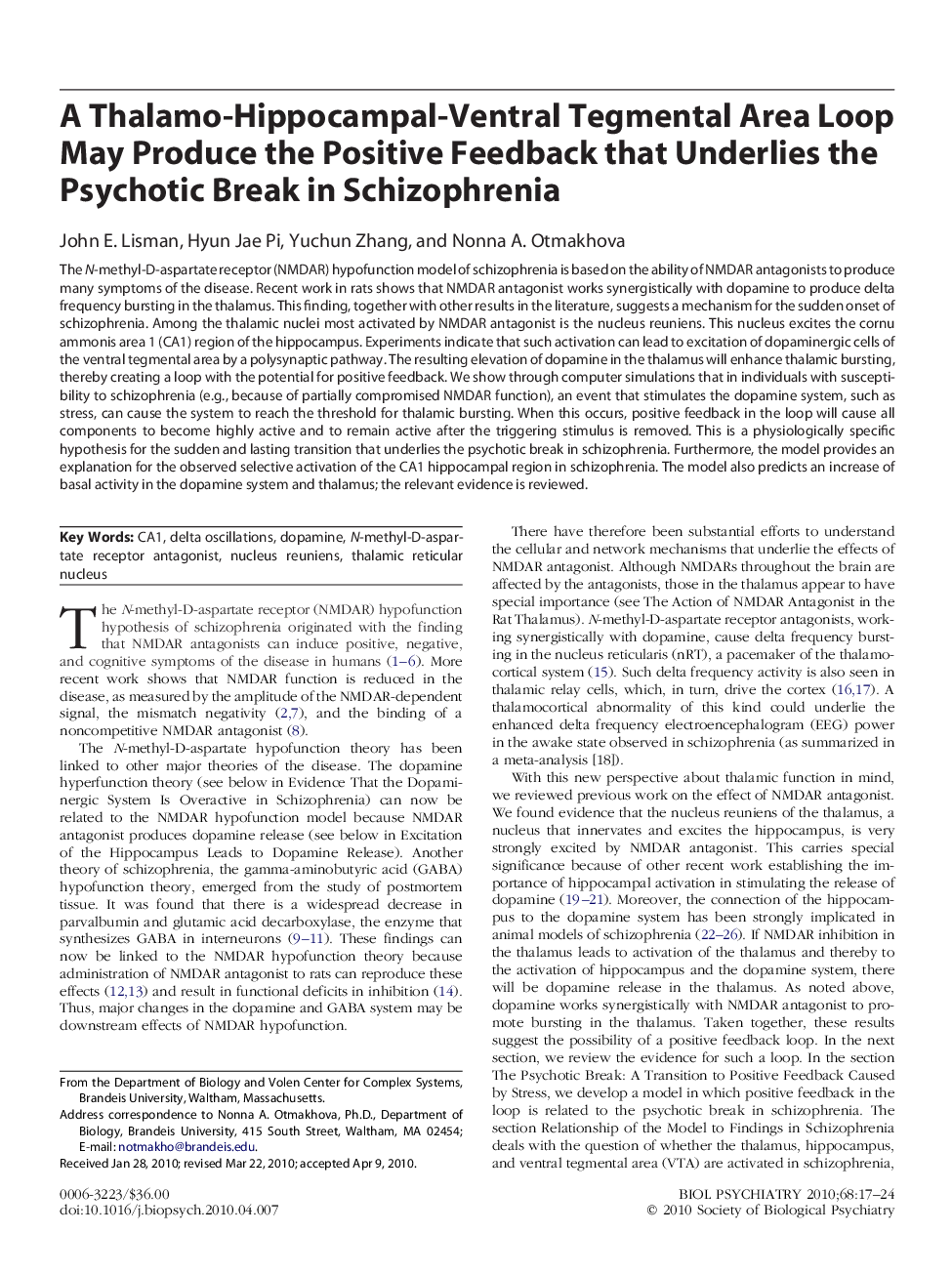| Article ID | Journal | Published Year | Pages | File Type |
|---|---|---|---|---|
| 6228162 | Biological Psychiatry | 2010 | 8 Pages |
The N-methyl-D-aspartate receptor (NMDAR) hypofunction model of schizophrenia is based on the ability of NMDAR antagonists to produce many symptoms of the disease. Recent work in rats shows that NMDAR antagonist works synergistically with dopamine to produce delta frequency bursting in the thalamus. This finding, together with other results in the literature, suggests a mechanism for the sudden onset of schizophrenia. Among the thalamic nuclei most activated by NMDAR antagonist is the nucleus reuniens. This nucleus excites the cornu ammonis area 1 (CA1) region of the hippocampus. Experiments indicate that such activation can lead to excitation of dopaminergic cells of the ventral tegmental area by a polysynaptic pathway. The resulting elevation of dopamine in the thalamus will enhance thalamic bursting, thereby creating a loop with the potential for positive feedback. We show through computer simulations that in individuals with susceptibility to schizophrenia (e.g., because of partially compromised NMDAR function), an event that stimulates the dopamine system, such as stress, can cause the system to reach the threshold for thalamic bursting. When this occurs, positive feedback in the loop will cause all components to become highly active and to remain active after the triggering stimulus is removed. This is a physiologically specific hypothesis for the sudden and lasting transition that underlies the psychotic break in schizophrenia. Furthermore, the model provides an explanation for the observed selective activation of the CA1 hippocampal region in schizophrenia. The model also predicts an increase of basal activity in the dopamine system and thalamus; the relevant evidence is reviewed.
